Generative AI Explained: Your Essential Guide to the Future of Creation
Dive into the revolutionary world of Generative AI, the technology empowering machines to create original content from text and images to code and music.
This essential guide demystifies the complex concepts behind AI’s creative boom, offering a clear roadmap to understanding its core mechanisms, diverse applications, and profound implications for industries and individuals alike.
Discover how Generative AI is not just a tool, but a paradigm shift redefining the boundaries of human-computer collaboration and shaping the very future of innovation and artistic expression.
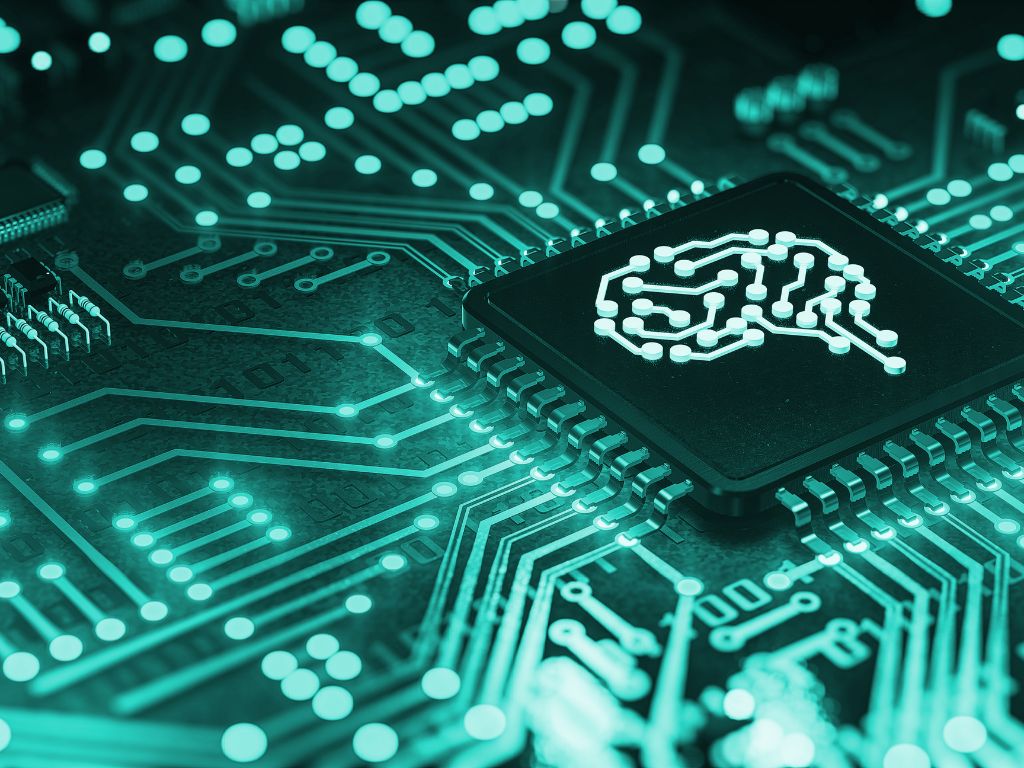
What is Generative AI? Understanding the Revolution
Imagine an artificial intelligence that doesn’t just analyze data or follow rules, but creates. That’s the heart of Generative AI. Unlike traditional AI, which might classify images or predict stock prices, Generative AI is a powerful new class of algorithms designed to produce novel, original content.
Think of it this way: for decades, AI has excelled at understanding the world around it. It can tell you if a picture contains a cat, or if a customer is likely to churn. Generative AI, however, takes a leap forward. It says, “I’ve seen millions of cats, now I can draw you a brand new one.” Or, “I’ve read countless articles, now I can write one from scratch.”
How Does it Work its Magic?
At its core, Generative AI learns from vast amounts of existing data. Whether it’s millions of images, billions of words of text, or thousands of hours of music, these models are trained to understand the underlying patterns, structures, and styles within that data. They don’t just memorize; they grasp the essence of what makes a cat look like a cat, or a sonnet sound like a sonnet.
Once trained, these models can then use that learned knowledge to generate new examples that resemble the training data but are entirely unique and have never existed before. It’s like a highly skilled apprentice who has studied under the greatest masters and can now produce original works in their style.
From Pixels to Prose: What Can it Create?
The capabilities of Generative AI are incredibly diverse and rapidly expanding:
- Text: Drafting emails, writing articles, crafting poetry, summarizing documents, or even generating computer code.
- Images: Creating photorealistic faces, designing abstract art, generating product mockups, or transforming sketches into detailed landscapes.
- Audio: Composing original music, generating realistic voiceovers, or creating sound effects.
- Video: Producing short animated clips, generating synthetic footage, or even deepfakes (though this highlights the ethical considerations).
This isn’t just about automation; it’s about augmentation. Generative AI isn’t here to replace human creativity, but to supercharge it, offering tools that transform ideas into tangible realities with unprecedented speed and scale. We’re moving from a world where computers help us understand information, to one where they help us create it.
Generative AI at a Glance
| Category | What It Creates | Everyday Uses | Example Tools/Models |
|---|---|---|---|
| Text | Articles, stories, poems, code, summaries | Blog posts, copywriting, coding help, chatbots, translations | ChatGPT, Gemini, Claude |
| Images | Photorealistic pictures, illustrations, designs, product mockups | Ads, logos, concept art, architecture, memes | Midjourney, DALL·E 3, Stable Diffusion |
| Audio | Music, voiceovers, sound effects | Podcasts, audiobooks, virtual assistants, video soundtracks | ElevenLabs, Suno, AIVA |
| Video | Animated clips, synthetic footage, deepfakes, transitions | Marketing videos, film pre-visualization, social ads, training videos | Runway, Pika, Synthesia |
Generative vs. Discriminative AI: A Key Distinction
While Generative AI is all about bringing new things into existence, it’s helpful to understand its counterpart: Discriminative AI. For years, much of the AI we’ve interacted with has been discriminative.
Think of it this way:
- Discriminative AI is a judge. Its primary role is to classify or predict based on input data. It learns to draw boundaries between different categories.
- Example: Given an image, a discriminative model can tell you, “This is a cat.” Or, “This email is spam.” Or, “This customer is likely to buy product X.” It discriminates between existing options.
- Generative AI, as we’ve discussed, is an artist or a creator. Its goal isn’t to categorize existing data, but to produce entirely new data that resembles its training.
- Example: Instead of identifying a cat, a generative model can draw a brand new cat that has never existed before. Instead of flagging spam, it can write a new email.
The key distinction lies in their output and objective: Discriminative AI answers “What is it?” or “Is this X or Y?”, while Generative AI answers “Create me something new like X.” Both are incredibly powerful, but they serve fundamentally different purposes in the AI landscape.
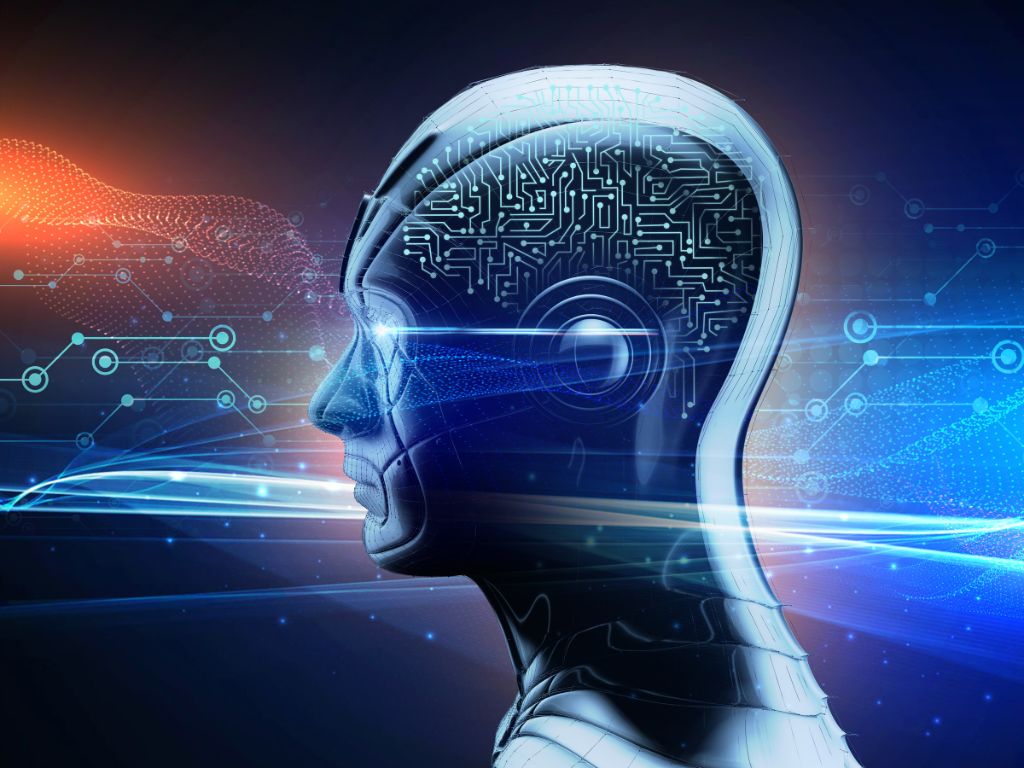
How Generative AI Works: The Magic Behind the Creation
Beneath the surface of its incredible outputs, Generative AI relies on sophisticated computational architectures, primarily deep neural networks. These networks are designed to process information in layers, mimicking (very loosely) the way our own brains process data, allowing them to identify incredibly complex patterns.
Learning the “Rules” of Reality
Imagine a tireless student given an immense library of books, an art gallery with millions of paintings, or an archive of every song ever recorded. This student doesn’t just read or view them; they meticulously analyze the grammar, the sentence structures, the narrative arcs, the brushstrokes, the color palettes, the musical scales, the rhythm – everything that makes content authentic.
Similarly, Generative AI models are trained on colossal datasets – think billions of images, trillions of words, or countless hours of audio. Through this intensive training, they don’t just memorize the data; they grasp the underlying statistical distributions and relationships that define that data. They learn the “rules” of what makes a cat look like a cat, a human face appear realistic, or a coherent sentence sound natural.
The Magic Behind Specific Creations
While the core principle is learning from data, different types of Generative AI employ unique strategies:
- Generative Adversarial Networks (GANs): The Artist & The Critic
One of the most intuitive ways to understand how some Generative AI models create is through GANs. Picture two neural networks locked in a perpetual game: - The Generator (the Artist): Tries to create new data (e.g., fake images) that look as real as possible.
- The Discriminator (the Critic): Tries to distinguish between real data from the training set and fake data produced by the Generator.
They train each other. The Generator gets better at fooling the Discriminator, and the Discriminator gets better at spotting fakes. This adversarial process drives both to become incredibly proficient, eventually leading the Generator to produce highly realistic, original content that even the Critic can’t tell from the real thing. - Transformers: The Master Storyteller
For text generation, the revolution came largely with Transformer models, the architecture behind large language models (LLMs) like GPT. These models excel at understanding context and relationships within sequences of data. They learn which words typically follow others, how concepts connect across sentences, and even the nuances of tone and style. When you give it a prompt, it essentially predicts the most probable next word, then the next, building up coherent and contextually relevant text piece by piece, drawing on the vast “knowledge” it gained during training. - Diffusion Models: The Sculptor
More recently, Diffusion Models have taken the lead in cutting-edge image and audio generation. These work by taking an input (often just random noise) and iteratively ‘denoising’ or ‘sculpting’ it based on a learned understanding of what real data looks like. Think of it like starting with a blurry, static-filled image and gradually refining it, step by step, until a clear, detailed image emerges, guided by your textual prompt. It effectively learns to reverse the process of adding noise to an image, thus generating new images from pure noise.
In essence, Generative AI doesn’t copy. It learns the fundamental principles of a domain, then applies those principles to construct entirely new examples that fit the learned patterns. It’s not magic, but a sophisticated blend of massive data, powerful algorithms, and immense computational power.
Generative AI Applications by Medium
| Medium | What It Creates | Real-World Uses | Notes / Challenges |
|---|---|---|---|
| Text | Blog posts, stories, code, translations, summaries. | Content marketing, copywriting, chatbots, programming support. | May produce “hallucinations” (false info); requires fact-checking. |
| Images | Photorealistic art, product mockups, logos, design variations. | Advertising, fashion, architecture, concept art, social media visuals. | Copyright issues & bias in training data; risk of deepfake misuse. |
| Audio | Music, sound effects, synthetic voices, narration. | Podcasts, audiobooks, film/game soundtracks, virtual assistants. | Ethical concerns around voice cloning; quality depends on dataset. |
| Video | Short clips, animations, synthetic footage, video edits. | Film production, ads, virtual try-ons, training videos. | Still early-stage; heavy compute demand; deepfake concerns. |
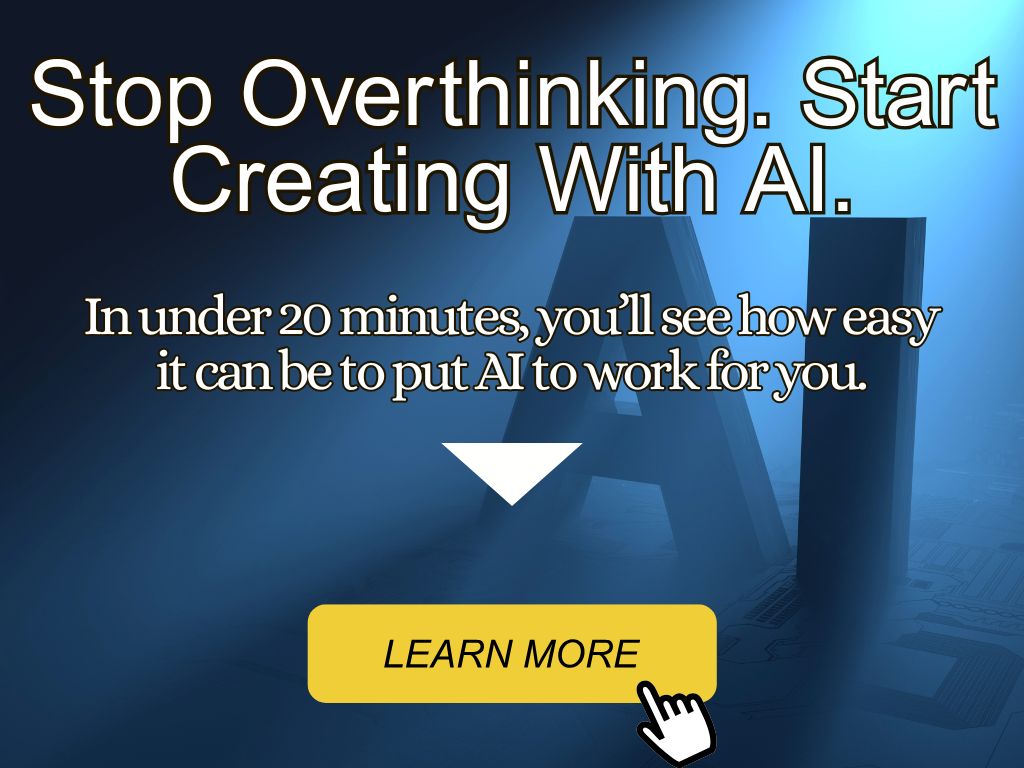
Key Architectures: GANs, VAEs, and Transformers Briefly Explained
Beneath the surface of Generative AI’s incredible outputs lie several foundational computational architectures, each with unique strengths and mechanisms.
- Generative Adversarial Networks (GANs): As touched upon, GANs operate through a fascinating “adversarial” process. A Generator network attempts to create new data (like images) that are indistinguishable from real data, while a Discriminator network tries to tell the difference between real and fake. This constant battle pushes both networks to improve, resulting in the Generator producing remarkably realistic and novel content, particularly excelling in image synthesis and style transfer.
- Variational Autoencoders (VAEs): VAEs take a different, more structured approach. They learn to encode input data (e.g., an image) into a compressed, meaningful “latent space” (via an encoder), and then decode it back into new, similar data (via a decoder). The “variational” aspect ensures this latent space is well-organized, allowing for smooth interpolations between generated outputs and making them excellent for tasks requiring controllable generation like subtly altering facial features or generating new variations of an existing item.
- Transformers: Revolutionizing large language models (LLMs) and much more, Transformers are designed to understand and generate sequential data with unparalleled contextual awareness. Their core innovation, the “attention mechanism,” allows them to focus on different parts of an input sequence when generating output, capturing long-range dependencies that were previously challenging. This makes them exceptionally powerful for tasks like writing coherent articles, generating code, translating languages, and even contributing to cutting-edge image generation when combined with other techniques.
Generative AI in Action: Current Capabilities Across Creative Mediums
Generative AI is no longer a futuristic concept; it’s actively shaping how we create across an astonishing array of mediums. From the words you read to the images you see, its capabilities are rapidly expanding, transforming industries and empowering creators.
Text: From Drafts to Dialogues
Large Language Models (LLMs) powered by Transformer architectures have revolutionized text generation.
- Content Creation: AI can draft blog posts, marketing copy, social media updates, and even entire articles, often requiring only a prompt and a few key points. This dramatically speeds up content pipelines.
- Code Generation: Developers are using AI to write code snippets, debug existing code, and even translate between programming languages, acting as a powerful coding assistant.
- Creative Writing: From poetry and short stories to screenplays and song lyrics, Generative AI can produce compelling narratives and stylistic prose, serving as a brainstorming partner or a first-draft generator.
- Summarization & Translation: It can condense lengthy documents into concise summaries or translate text between languages with impressive accuracy and fluency, breaking down communication barriers.
- Personalized Communication: Businesses can leverage AI to generate personalized emails, customer service responses, and marketing messages tailored to individual preferences.
Images: Visualizing the Impossible
The ability of Generative AI to create stunning visuals has captivated the public imagination.
- Art & Design: AI can generate photorealistic images from text descriptions, create abstract art, design logos, or produce concept art for games and films, democratizing high-quality visual creation.
- Product Mockups & Advertising: Businesses can quickly visualize new product designs, generate variations of advertising creatives, or create diverse models for fashion campaigns without costly photoshoots.
- Image Editing & Enhancement: Tools can use AI to “outpaint” (expand an image beyond its original borders), “inpainting” (removing objects from an image and filling the gap realistically), or transform images into different artistic styles.
- Architectural Visualization: Architects and interior designers can rapidly generate multiple design options and realistic renderings of spaces.
Audio: Composing the Sounds of Tomorrow
Generative AI is also making significant strides in the auditory domain.
- Music Composition: AI can compose original pieces of music in various genres, generate background scores for video, or create jingles for advertisements, offering new tools for musicians and media producers.
- Voice Synthesis & Narration: Highly realistic synthetic voices can be generated for audiobooks, podcasts, voiceovers, and virtual assistants, often indistinguishable from human speech and available in multiple languages and accents.
- Sound Effects: AI can create custom sound effects for games, films, or interactive experiences, providing a vast library of unique auditory elements.
Video: Dynamic & Synthetic Storytelling
While still an emerging field compared to text and image, Generative AI for video is rapidly advancing.
- Short Clips & Animation: AI can generate short animated sequences, create dynamic transitions between scenes, or even produce entire short videos from text prompts.
- Synthetic Media & Deepfakes: While raising ethical concerns, AI can create highly realistic synthetic footage of people and events, with applications in film production, virtual try-ons, and personalized marketing.
- Video Editing Assistance: AI can help with tasks like automatically generating subtitles, removing unwanted objects from footage, or applying consistent visual styles across different clips.
This explosion of capabilities demonstrates that Generative AI is not just a tool for automation, but a powerful partner for human creativity, enabling us to explore new frontiers of expression and bring ideas to life with unprecedented ease and innovation.
Key Models at a Glance: GANs, VAEs, Transformers & Diffusion
| Model | How It Works | Best At | Limitations / Challenges |
|---|---|---|---|
| GANs (Generative Adversarial Networks) | Generator tries to create realistic data, while Discriminator critiques it in a back-and-forth loop. | Photorealistic images, style transfer, creative visual synthesis. | Training can be unstable; prone to producing artifacts or unrealistic outputs. |
| VAEs (Variational Autoencoders) | Encode input into a compressed “latent space” and decode it into new variations. | Controllable generation, smooth interpolation between outputs, altering features. | Outputs often blurrier or less sharp than GANs; less suited for high-detail tasks. |
| Transformers | Use attention mechanisms to understand relationships in sequences of data. | Natural language (chatbots, translation, summarization), code generation, long-form text. | Computationally expensive; prone to “hallucinations” (confident but false answers). |
| Diffusion Models | Start with random noise and iteratively “denoise” into a coherent output. | Cutting-edge image & audio generation (e.g., DALL·E, Stable Diffusion, Midjourney). | High computational cost; can be slow to generate without optimizations. |

The Future of Creation: Opportunities and Innovations
As we stand on the cusp of a new era, Generative AI isn’t just a technological marvel; it’s a catalyst for unprecedented change, poised to redefine industries, empower individuals, and unlock entirely new forms of expression. The future of creation is not just about what we can make, but how we will make it, and who gets to participate.
Generative AI promises a future where content and products are not just mass-produced but hyper-personalized. Imagine educational materials that adapt in real-time to a student’s learning style, or therapeutic soundscapes dynamically composed to soothe an individual’s specific stress levels. From fashion that’s designed to your exact aesthetic preferences to video games that evolve their narratives based on your choices, AI will craft experiences that feel uniquely yours, moving beyond simple recommendations to full-blown bespoke creation.
Beyond consumer applications, Generative AI is set to turbocharge scientific discovery and technological innovation. In fields like medicine, AI can generate novel molecular structures for drug discovery, potentially shortening development cycles. Material scientists can design new composites with precise properties. Engineers can leverage AI to optimize complex designs, from microchips to architectural blueprints, exploring vast solution spaces far quicker than human teams alone. It’s a powerful partner in the quest for breakthroughs, automating the generation of hypotheses and prototypes.
One of the most exciting aspects is the potential to democratize creativity. High-quality visual art, compelling prose, and intricate music, once requiring years of specialized training, are becoming accessible to anyone with an idea. Small businesses can generate professional marketing assets without large budgets, individuals can bring their stories to life without needing a production team, and artists can explore new mediums or styles with AI as their co-creator. This lowers the barrier to entry, fostering an explosion of diverse content and empowering voices that might otherwise have remained unheard.
This technological shift will undoubtedly spawn entirely new industries and job categories. We’re already seeing the emergence of “prompt engineers” – individuals skilled in communicating with AI models to achieve desired outputs. Beyond that, roles focused on AI ethics, content curation, model fine-tuning, and the development of AI-powered creative tools will become central. Rather than replacing human ingenuity, Generative AI will reshape the landscape of work, elevating human roles to focus on strategic thinking, ethical oversight, and high-level creative direction.
The future is less about AI replacing human creators and more about augmentation. Generative AI acts as an intelligent assistant, a tireless brainstormer, and a rapid prototyping machine. Writers can overcome writer’s block with AI-generated ideas, designers can iterate through countless variations in minutes, and musicians can explore complex harmonies with AI’s guidance. This synergy allows humans to focus on the strategic, emotional, and truly innovative aspects of creation, expanding the scope of what’s possible and accelerating the pace at which ideas come to life.
In essence, Generative AI is not merely a tool; it’s a paradigm shift. It empowers us to dream bigger, build faster, and express ourselves in ways previously unimaginable. While challenges and ethical considerations undoubtedly lie ahead, the opportunities for innovation, personalization, and human flourishing are profound, promising a future where the only limit to creation is our imagination.
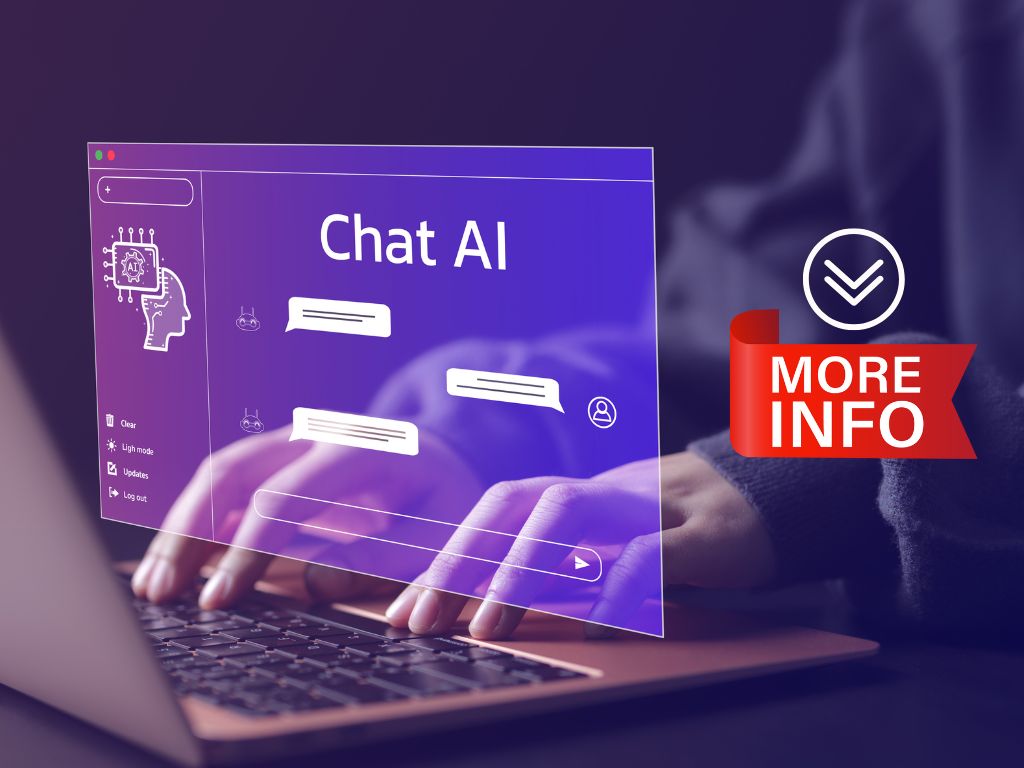
Navigating the Ethical Landscape: Challenges and Responsibilities
While the promise of Generative AI is boundless, unlocking new creative frontiers and driving innovation, it’s crucial to acknowledge that such a powerful technology also brings with it significant ethical challenges and responsibilities. As we build the future of creation, we must do so with foresight and a strong moral compass.
The Double-Edged Sword of Creation
The very capabilities that make Generative AI so exciting also present its greatest risks:
- Misinformation and Deepfakes: Perhaps one of the most immediate and unsettling concerns is the potential for misinformation and synthetic media, often referred to as ‘deepfakes.’ The ability to generate hyper-realistic images, audio, and video of events or statements that never occurred poses a serious threat to public trust, democratic processes, and individual reputations. Distinguishing truth from fabricated reality becomes increasingly difficult, demanding new forms of digital literacy and verification.
- Copyright and Intellectual Property: Another contentious area revolves around copyright and intellectual property. Generative AI models learn by ingesting vast datasets, often comprising copyrighted works – books, art, music, code. This raises fundamental questions: Does training on copyrighted material constitute fair use? Who owns the ‘original’ content generated by AI, especially if it closely resembles the style or elements of existing human creations? These legal and ethical dilemmas are actively being debated, requiring new frameworks to protect creators while fostering innovation.
- Bias and Fairness: Generative AI, like all AI, is only as unbiased as the data it’s trained on. If the training data reflects societal prejudices, historical inequalities, or underrepresentation, the AI model will inevitably learn and perpetuate these biases in its outputs. This can lead to discriminatory content generation, unfair representations, or the reinforcement of harmful stereotypes, particularly in areas like facial generation, content moderation, or even code suggestions. Ensuring fairness and mitigating bias requires careful data curation, model auditing, and diverse development teams.
- Job Displacement and Economic Impact: While we’ve highlighted augmentation, the discussion around job displacement is an unavoidable ethical consideration. As AI becomes more capable of performing tasks traditionally done by human creatives, writers, artists, and designers, concerns about the economic impact and the future of work grow. The challenge lies in preparing workforces for this shift, fostering new skills, and exploring economic models that support a society where AI plays an increasingly central role in creation.
- Environmental Impact: The sheer computational power required to train and run these sophisticated models has a substantial environmental footprint. The energy consumption associated with large-scale training of LLMs and diffusion models contributes to carbon emissions. As Generative AI becomes more pervasive, addressing its energy demands and promoting sustainable AI practices will be critical.
- Security and Malicious Use: Beyond deepfakes, the generative capabilities can be exploited for malicious purposes. This includes generating highly convincing phishing emails, crafting targeted disinformation campaigns, creating new forms of malware, or even designing sophisticated cyberattacks. Ensuring the responsible deployment and robust security measures for these models is paramount to prevent their weaponization.
Charting a Responsible Course
Addressing these challenges requires a multifaceted approach involving technologists, policymakers, ethicists, and the public:
- Responsible Development: Developers and companies building Generative AI must prioritize ethical design, implement robust safety guardrails, and conduct thorough impact assessments before deployment.
- Transparency and Provenance: Efforts to watermark AI-generated content or develop reliable detection tools are essential to help users distinguish between human and synthetic creations. Clear labeling and provenance tracking can build trust.
- Regulatory Frameworks: Governments and international bodies are grappling with how to regulate this rapidly evolving technology. Striking a balance between fostering innovation and protecting society from harm will be crucial. This includes establishing clear guidelines for data use, intellectual property, and accountability.
- Digital Literacy: Empowering individuals with the critical thinking skills to evaluate information and discern synthetic content is more important than ever. Education will be key to navigating a world where reality can be easily manipulated.
- Ethical AI Research: Continued research into AI ethics, bias detection, fairness, and explainability is vital to build more responsible and trustworthy systems.
Generative AI is not inherently good or bad; it is a powerful tool whose impact depends entirely on how we choose to wield it. Embracing its potential while proactively mitigating its risks is a collective responsibility. By fostering open dialogue, prioritizing ethical considerations, and implementing thoughtful governance, we can ensure that this transformative technology serves to augment human flourishing and creativity, rather than diminish it.
Generative AI Pros ✅ vs Cons ⚠️
| Pros ✅ | Cons ⚠️ |
|---|---|
| Supercharges creativity: Helps writers, designers, and musicians generate ideas and drafts quickly. | Risk of misinformation: Deepfakes and false content can erode trust and spread quickly. |
| Saves time & resources: Automates repetitive tasks, enabling humans to focus on strategy and innovation. | Bias in outputs: Models can replicate stereotypes or unfair patterns from training data. |
| Democratizes creation: Lowers barriers so anyone can produce professional-level work. | Copyright concerns: Training on copyrighted material sparks legal and ownership disputes. |
| Hyper-personalization: Generates tailored content, products, and experiences for individuals. | Job disruption: Some creative roles may shrink or transform, raising workforce challenges. |
| Accelerates innovation: Assists in drug discovery, design, prototyping, and scientific research. | Environmental impact: Training large models consumes massive energy and resources. |
| Enhances collaboration: Acts as a co-pilot, expanding human potential rather than replacing it. | Security misuse: Can be weaponized for phishing, scams, or malicious code generation. |
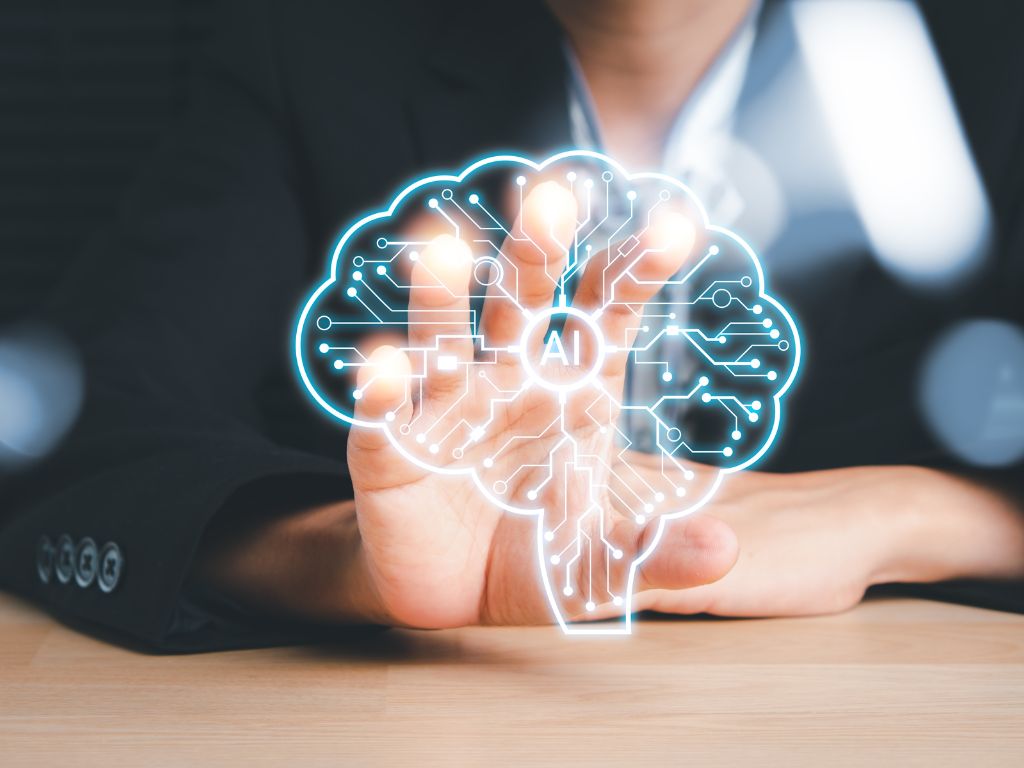
The Human Element: Redefining Creativity and Collaboration
Far from replacing human ingenuity, Generative AI is ushering in an era where creativity is redefined, expanded, and deeply collaborative. It’s not about machines taking over the artistic process, but about a powerful partnership that elevates human potential and reshapes how we bring ideas to life.
The Evolution of the Creator
Historically, a creator’s skill was often measured by their mastery of tools and techniques – the ability to wield a brush, craft a sentence, or compose a melody with precision. Generative AI shifts this paradigm. While technical execution remains valuable, the emphasis increasingly moves towards:
- Vision and Intent: The human provides the what and the why. What story needs to be told? What emotion should be conveyed? What problem needs solving? AI becomes the tireless executor of that vision.
- Prompt Engineering and Curation: A new skill set is emerging: the art of communicating effectively with AI. “Prompt engineering” involves crafting precise instructions to guide the AI towards the desired output. Beyond that, “curation” – selecting, refining, and combining AI-generated elements – becomes paramount, requiring a keen eye, aesthetic judgment, and strategic thinking.
- Strategic Direction: Instead of spending hours on repetitive tasks, creators can focus on high-level strategy, conceptual development, and exploring a wider range of ideas. AI handles the grunt work, freeing up human minds for the truly innovative leaps.
AI as a Creative Co-Pilot
Think of Generative AI as an infinitely patient, incredibly skilled, and lightning-fast creative assistant.
- Brainstorming Partner: Facing writer’s block? AI can generate dozens of plot twists, character names, or marketing taglines in seconds, sparking new directions for human creativity.
- Rapid Prototyper: Designers can iterate through countless visual concepts or product mockups in minutes, quickly visualizing ideas that would once take days or weeks. Architects can explore diverse structural designs with unprecedented speed.
- Skill Augmenter: For those with ideas but lacking the technical skills (e.g., a writer who can’t draw, or a visual artist who can’t compose music), AI can bridge that gap, allowing them to manifest their vision across mediums.
- Personalized Tutor: AI can help aspiring creators learn by generating examples in specific styles, providing variations, and offering instant feedback on generated content.
The Uniquely Human Contribution
Despite AI’s astonishing capabilities, the “human element” remains indispensable. Generative AI can mimic, extrapolate, and combine, but it does not (yet) possess:
- Lived Experience and Emotion: AI doesn’t feel joy, sorrow, or wonder. It can simulate emotional language or imagery, but the authentic, empathetic connection with an audience stems from genuine human experience.
- Cultural Nuance and Context: While AI learns from vast datasets, deeply understanding subtle cultural references, historical significance, or evolving social dynamics often requires human insight.
- Moral and Ethical Judgment: As discussed, AI lacks a moral compass. The human creator is crucial for embedding ethical considerations, ensuring responsible use, and guiding the AI’s output towards positive societal impact.
- Intentionality and Purpose: AI generates based on patterns; humans imbue creation with deliberate purpose, meaning, and a desire to communicate something specific.
In this evolving landscape, the most potent creations will likely emerge from the synergy between human and machine. Humans bring the inspiration, the emotional depth, the ethical framework, and the overarching vision. AI brings the power to actualize those visions with unparalleled speed, scale, and technical proficiency. We are not just witnessing the future of creation; we are actively participating in its redefinition, fostering a new era of collaborative ingenuity.

Embracing the Generative Era: Your Essential Next Steps
The era of generative creation is upon us, and instead of being a passive observer, you have the opportunity to actively shape its future. Embracing Generative AI isn’t about becoming a coding expert; it’s about cultivating a new mindset, honing new skills, and understanding how to effectively partner with these powerful tools. Here’s how you can take your essential next steps:
1. Dive In and Experiment
The best way to understand Generative AI is to interact with it. Many powerful tools are now accessible to the public, often with free tiers or trials.
- For Text: Experiment with large language models like ChatGPT, Google’s Gemini, or Anthropic’s Claude. Try asking them to draft an email, brainstorm ideas, summarize an article, or even write a short story.
- For Images: Explore platforms like Midjourney, DALL-E 3, or Stable Diffusion. Start with simple prompts (“a cat wearing a spacesuit”) and gradually add more detail, style descriptors, and artistic influences.
- For Audio/Music: Look into AI music generators or voice synthesis tools to get a feel for their capabilities.
Don’t be afraid to break things or get unexpected results. Each interaction is a learning opportunity.
2. Master the Art of Prompt Engineering
Communicating effectively with Generative AI is a skill in itself, often referred to as “prompt engineering.” It’s about crafting clear, concise, and comprehensive instructions that guide the AI towards your desired output.
- Be Specific: Instead of “write about a dog,” try “write a heartwarming, 500-word short story about a golden retriever puppy’s first snow day, from the puppy’s perspective, in a whimsical tone.”
- Provide Context: Give the AI background information, target audience, desired style, and any constraints.
- Iterate and Refine: Your first prompt might not yield perfect results. Adjust, add details, remove ambiguities, and try again. Think of it as a conversation.
- Experiment with Tone and Format: Ask for bullet points, a formal report, a casual tweet, or a poetic verse.
The better you become at prompting, the more powerful Generative AI becomes as your creative partner.
3. Cultivate Critical Thinking and Ethical Awareness
While Generative AI is astonishing, it’s not infallible. It’s crucial to approach its outputs with a critical eye:
- Fact-Check Everything: AI can “hallucinate” – present false information as fact. Always verify critical data.
- Recognize Bias: Remember that AI models learn from existing data, which can contain biases. Be mindful of stereotypes or unfair representations in generated content.
- Understand Limitations: AI doesn’t have consciousness, emotions, or lived experience. Its “creativity” is based on patterns, not genuine insight or intent.
- Be Mindful of Ethics: Consider the source of the training data, intellectual property rights, and the potential for misuse (e.g., deepfakes, misinformation). Always use these tools responsibly and ethically.
Your human judgment, ethics, and ability to discern truth remain paramount.
4. Stay Curious and Continuously Learn
The field of Generative AI is evolving at an incredible pace. What’s cutting-edge today might be commonplace tomorrow.
- Follow the News: Keep an eye on tech news, AI research updates, and industry blogs.
- Join Communities: Engage with online forums, social media groups, and local meetups focused on AI. Learning from others’ experiences and insights is invaluable.
- Experiment with New Tools: As new models and platforms emerge, try them out to understand their unique strengths and capabilities.
Embrace a mindset of continuous learning and adaptation.
5. Focus on Your Unique Human Strengths
Ultimately, Generative AI is a tool to augment, not replace, human ingenuity. The future of creation will be defined by the synergy between human and machine. Double down on the skills that make you uniquely human:
- Vision and Strategic Thinking: AI can execute, but you provide the overarching purpose, the “why.”
- Emotional Intelligence: AI can simulate emotion, but only humans genuinely connect with an audience on an emotional level.
- Critical Evaluation and Curation: You bring the taste, the judgment, and the discernment to refine AI outputs into truly impactful creations.
- Ethical Leadership: You are the moral compass, guiding AI’s power towards positive and responsible uses.
By actively engaging with Generative AI, understanding its mechanics, and consciously integrating it into your creative process, you’re not just adopting a new technology – you’re preparing yourself to thrive in the exciting, collaborative future of creation.

Conclusion
We’ve journeyed through the fascinating landscape of Generative AI, unraveling its core mechanisms, exploring its diverse capabilities across text, images, audio, and video, and understanding its profound implications. What’s clear is that this isn’t merely another technological advancement; it’s a paradigm shift in how we conceive, produce, and interact with content.
Generative AI acts as an unparalleled augmenter of human creativity, transforming ideas into tangible realities with unprecedented speed and scale. It promises a future of hyper-personalized experiences, democratizes access to sophisticated creative tools, and acts as a tireless partner in scientific discovery and innovation. From sparking new artistic movements to accelerating drug development, its potential to reshape our world is immense.
However, as with any transformative power, we’ve also confronted the critical ethical and societal challenges it presents. Misinformation, intellectual property debates, inherent biases, and the environmental footprint demand our vigilant attention and responsible stewardship. The future of creation hinges not just on what AI can do, but on how we collectively choose to guide its development and deployment.
Ultimately, the narrative of Generative AI is one of collaboration, not replacement. It underscores the enduring and irreplaceable value of human vision, intent, empathy, and ethical judgment. Our capacity to ask the right questions, to imbue creations with meaning, and to apply a moral compass will define the impact of these powerful tools.
So, as you step forward, remember that you are not just an observer of this future, but a co-creator. Embrace the tools, hone your prompt engineering skills, remain critically aware, and continuously learn. The era of generative creation is not just upon us; it’s an open invitation to redefine what’s possible, pushing the boundaries of imagination in a partnership between human ingenuity and artificial intelligence. The future of creation is not a destination, but an exciting, evolving journey that we are all embarking on, together.

FAQs About Generative Ai
Is Generative AI the same as “regular” AI?
No, not exactly. “Regular” or Discriminative AI primarily focuses on understanding and classifying existing data (e.g., identifying a cat in a photo, predicting stock prices). Generative AI, on the other hand, creates entirely new, original content (e.g., drawing a brand new cat, writing an article from scratch) by learning patterns from vast datasets. Think of Discriminative AI as a judge, and Generative AI as an artist.
Will Generative AI replace human creators and jobs?
The consensus is that Generative AI will more likely augment human creativity rather than fully replace it. While it can automate repetitive tasks and generate vast amounts of content, human creators bring unique vision, emotional depth, cultural nuance, and ethical judgment – elements AI cannot replicate. It will likely redefine job roles, fostering new opportunities in areas like prompt engineering, AI ethics, and strategic creative direction.
How accurate or reliable is the content generated by AI?
Generative AI can be incredibly impressive, but it’s not infallible. Models can sometimes “hallucinate,” meaning they generate convincing but entirely false information or nonsensical outputs. It’s crucial to approach AI-generated content with a critical eye, especially for factual information, and always fact-check important details. Human oversight remains essential for accuracy and quality control.
Who owns the copyright for content created by Generative AI?
This is a rapidly evolving and complex legal question, with different jurisdictions and institutions taking varying stances. Generally, in many regions (like the US), content created solely by an AI without significant human creative input may not be eligible for copyright protection. However, if a human uses AI as a tool and significantly modifies, arranges, or curates the output, their human contribution might be copyrightable. It’s a legal grey area that’s still being defined.
What’s the best way for a beginner to start using Generative AI?
The best way is to dive in and experiment!
- For Text: Try free versions of Large Language Models like ChatGPT, Google’s Gemini, or Anthropic’s Claude.
- For Images: Explore platforms like Midjourney, DALL-E 3, or Stable Diffusion.
Start with simple prompts and gradually refine them, focusing on clear and specific instructions – this is often called “prompt engineering.” Don’t be afraid to iterate and learn from unexpected results.
What are the main types of Generative AI models I should know about?
While there are many, three prominent architectures are:
- Generative Adversarial Networks (GANs): Two networks (Generator and Discriminator) compete to create highly realistic images.
- Transformers: Excel at understanding context in sequences, powering most Large Language Models (LLMs) for text generation.
- Diffusion Models: Gradually refine random noise into clear images or audio, leading to cutting-edge visual and auditory generation.
Can Generative AI be biased?
Yes, absolutely. Generative AI models learn from the vast datasets they are trained on. If these datasets contain societal biases, stereotypes, or underrepresented groups, the AI will learn and perpetuate these biases in its generated outputs. This can lead to unfair, discriminatory, or inaccurate content. Mitigating bias is a major focus in ethical AI development.
Leave a Reply